…descended again and the gown remained simple. The bodice remained heavily whaleboned like stays. (Photo: 1620-1630 stays studied by archivists)
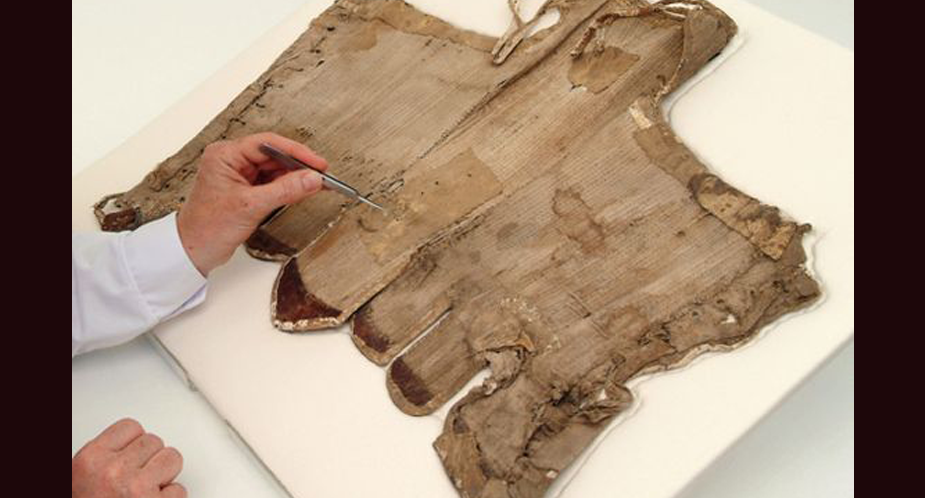

…descended again and the gown remained simple. The bodice remained heavily whaleboned like stays. (Photo: 1620-1630 stays studied by archivists)
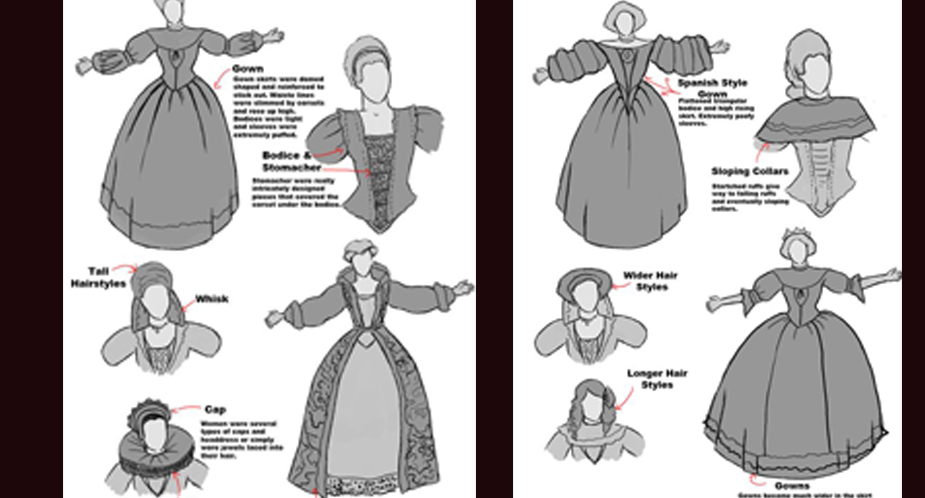
…a very simple dress with a very low neck and short waist. The silhouette became longer and straighter, and stays almost disappeared. They were incorporated into the dress itself. (Sketches: Fashion lines 1600 to 1660)
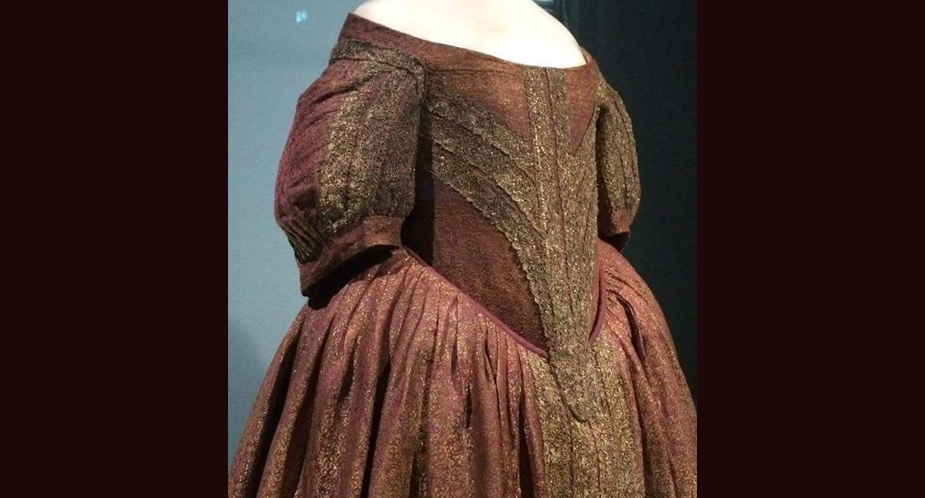
…with the Puritan regime coming into power put an end to extravagant dress. Restrictions were placed on imports to France and England, which caused an increase in home-produced silks and textiles which were inferior in quality. (Extant: simple 1650 dress of Magdelena Sybilla of Germany)
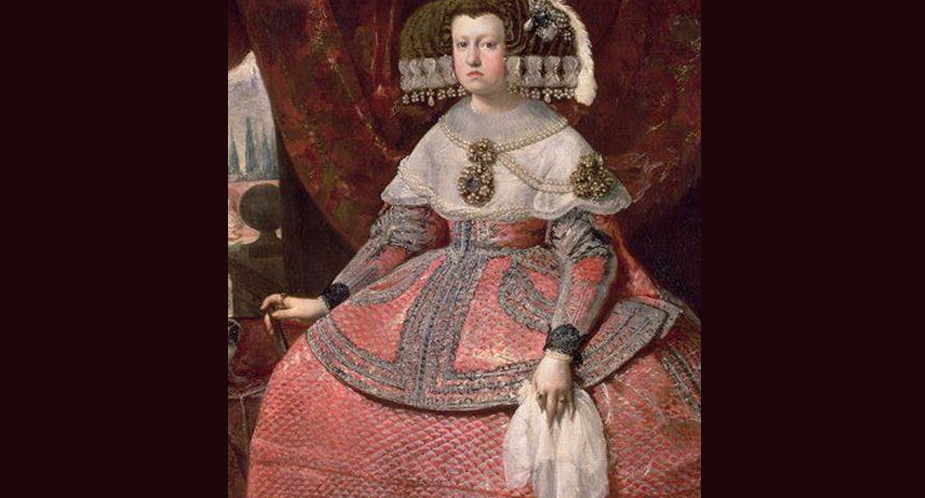
…the silhouette changed and evolved quite a bit. It continued to become softer and more rounded. Simpler materials replaced the stiff patterned brocades and velvets notable of the prior era. The best silks, velvets, brocades, and laces still came from or through Italy at the time. (Portrait: 1658 Queen Maria …
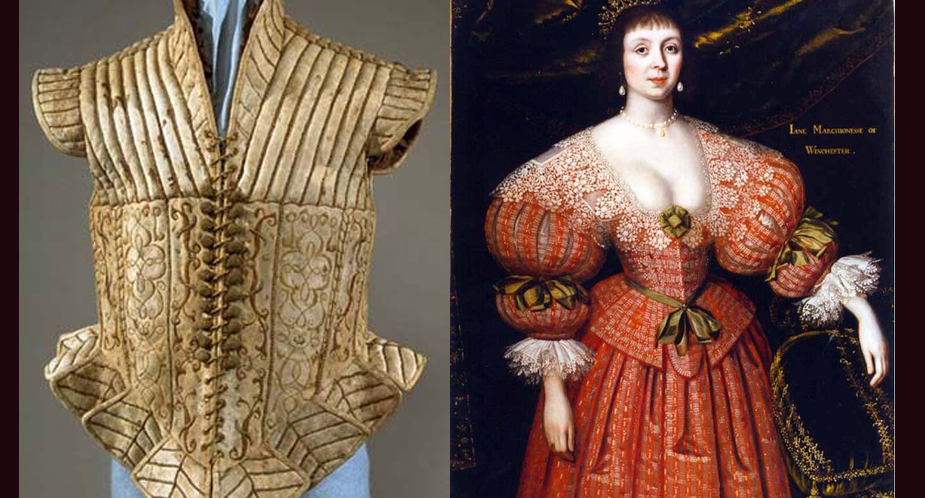
…were covered with rich material and peeked out from under the front of the robe. In 1630, a short bodice that looked like the man’s doublet of the same time was worn by all classes and especially lower and middle classes long after women of elite classes had abandoned them. …
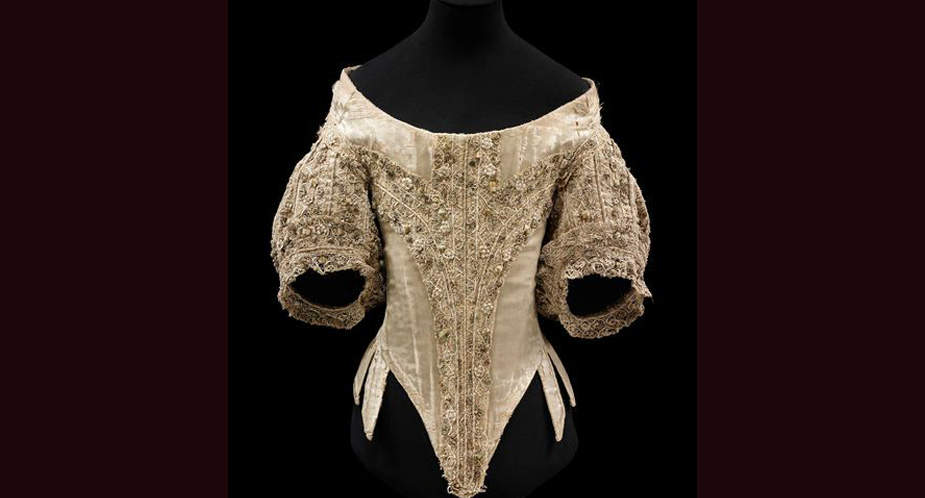
…of the waistline as it rose or fell, but stays kept a long center front and stomacher. The basque was replaced by long side tabs, to which petticoats were tied. (Extant garment: 17th century stiffened bodice with tabs)
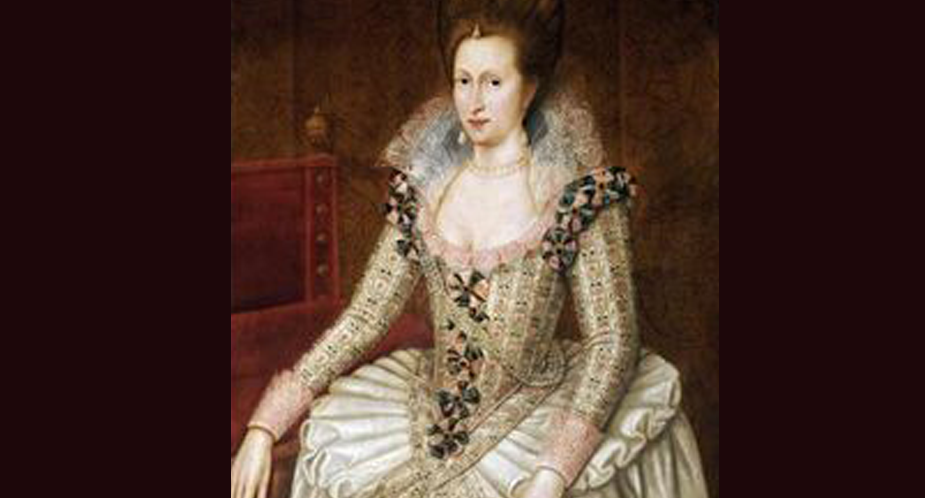
…were very similar in shape to those of the 16th, but the neckline became much lower in front. By about 1620, the farthingale (skirt support) was discarded, and gowns became much shorter. (Painting: Queen Anne of Denmark in about 1600 with the new, lower bodice but old understructures)
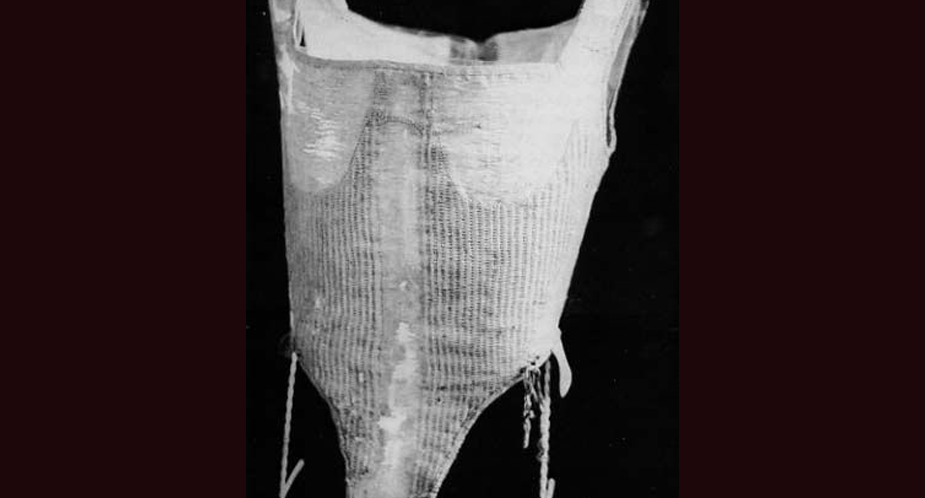
…the word “corset” can be found, but it is always used in plural “corsets”. France kept the old term “corps” until about the year 1800, after which the term “corset” (never “corsets”) was used. (Photo: Early 1600’s Tudor CORSETS originating from the French term ‘Corps’ or ‘Body’. Term used commonly …
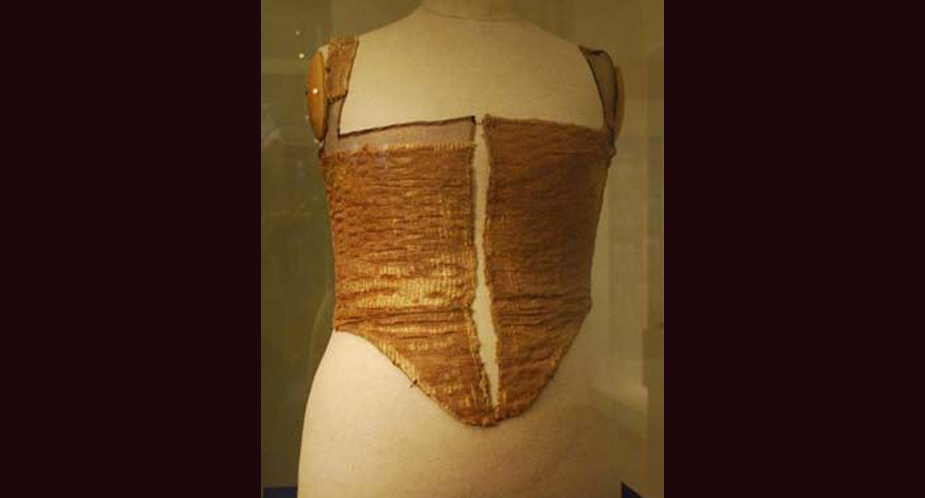
…100 years, the “pair of bodys” would be called instead a “pair of stays”. The latter name is still used today to describe the under bodice with artificial stiffeners as supports or “stays”. (Photo: 1560-62 “Pair of Bodys” found in the Prague Castle)
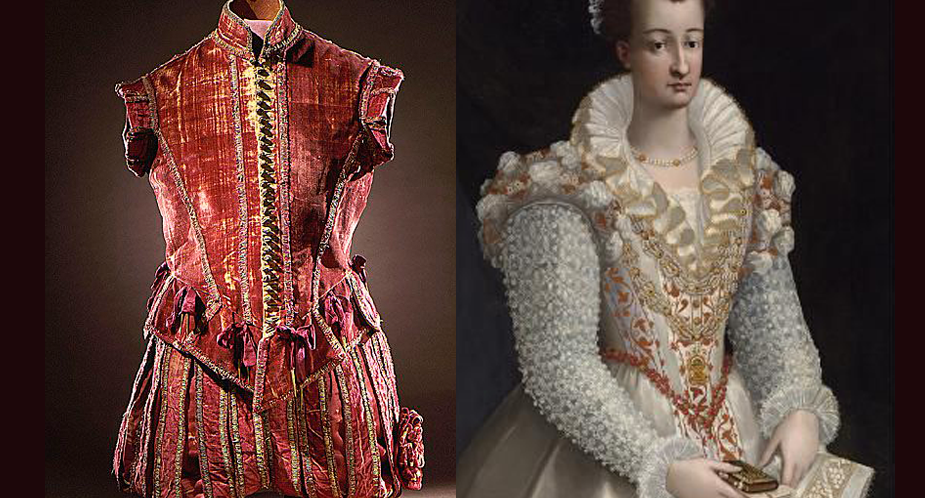
…when the Catholic Church held control over social morals. It was a time of Restoration of the British Monarchy, who introduced a more sober attitude. Clothing became more elegant in style and simpler in cut. Women’s fashion was a version of man’s doublets, including short waisted “basques”. Silk satins were …